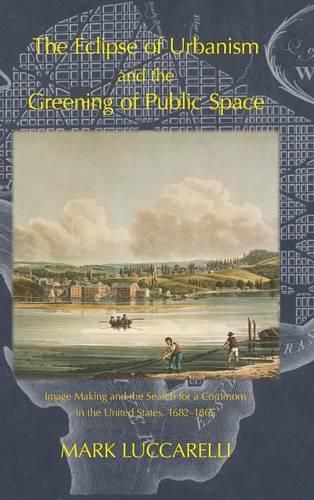Readings Newsletter
Become a Readings Member to make your shopping experience even easier.
Sign in or sign up for free!
You’re not far away from qualifying for FREE standard shipping within Australia
You’ve qualified for FREE standard shipping within Australia
The cart is loading…






This title is printed to order. This book may have been self-published. If so, we cannot guarantee the quality of the content. In the main most books will have gone through the editing process however some may not. We therefore suggest that you be aware of this before ordering this book. If in doubt check either the author or publisher’s details as we are unable to accept any returns unless they are faulty. Please contact us if you have any questions.
The question of how environmental awareness originated and developed has been subject to sharply contesting points of view. Recently the debate has been expressed epistemologically in constructivist versus materialist approaches. In this book, Mark Luccarelli pushes past unproductive mind/body debates by rooting the rise of environmental awareness in the political and geographical history of the US. Considering history in terms of the categorical development of space - social, territorial and conceptual - the book examines the forces that drove people to ignore their surroundings by distancing culture from place and by assiduously advancing the dissolution of social bonds. Thus beneath the question of the surround, and the key to its renewal today, is the quest to re-engage the common. The latter is still a part of the approach to space, its arrangement and disposition, and has a necessary environmental dimension.Concepts of urbanism, place identity, picturesque landscape and nature are part of a larger Western intellectual and cultural context but, by examining the imaging of cities and landscape, Luccarelli links particular American geographic settings - as well as the political ideals and practices of the republic - to the application and aesthetic reading of these ideas. The advocates of these various perspectives shared an aesthetic orientation as a means of redefining or recovering the common. The book looks at various American urban and regional contexts, as well as the work of artists, writers and public figures, including painter and engraver William Birch, Thomas Jefferson, engraver John Hill, Henry David Thoreau and Frederick Law Olmsted. Luccarelli embeds his environmental study in the works of these men and in the course of American history between the planting of the city of Philadelphia and the establishment of Olmsted’s major urban parks.
$9.00 standard shipping within Australia
FREE standard shipping within Australia for orders over $100.00
Express & International shipping calculated at checkout
This title is printed to order. This book may have been self-published. If so, we cannot guarantee the quality of the content. In the main most books will have gone through the editing process however some may not. We therefore suggest that you be aware of this before ordering this book. If in doubt check either the author or publisher’s details as we are unable to accept any returns unless they are faulty. Please contact us if you have any questions.
The question of how environmental awareness originated and developed has been subject to sharply contesting points of view. Recently the debate has been expressed epistemologically in constructivist versus materialist approaches. In this book, Mark Luccarelli pushes past unproductive mind/body debates by rooting the rise of environmental awareness in the political and geographical history of the US. Considering history in terms of the categorical development of space - social, territorial and conceptual - the book examines the forces that drove people to ignore their surroundings by distancing culture from place and by assiduously advancing the dissolution of social bonds. Thus beneath the question of the surround, and the key to its renewal today, is the quest to re-engage the common. The latter is still a part of the approach to space, its arrangement and disposition, and has a necessary environmental dimension.Concepts of urbanism, place identity, picturesque landscape and nature are part of a larger Western intellectual and cultural context but, by examining the imaging of cities and landscape, Luccarelli links particular American geographic settings - as well as the political ideals and practices of the republic - to the application and aesthetic reading of these ideas. The advocates of these various perspectives shared an aesthetic orientation as a means of redefining or recovering the common. The book looks at various American urban and regional contexts, as well as the work of artists, writers and public figures, including painter and engraver William Birch, Thomas Jefferson, engraver John Hill, Henry David Thoreau and Frederick Law Olmsted. Luccarelli embeds his environmental study in the works of these men and in the course of American history between the planting of the city of Philadelphia and the establishment of Olmsted’s major urban parks.